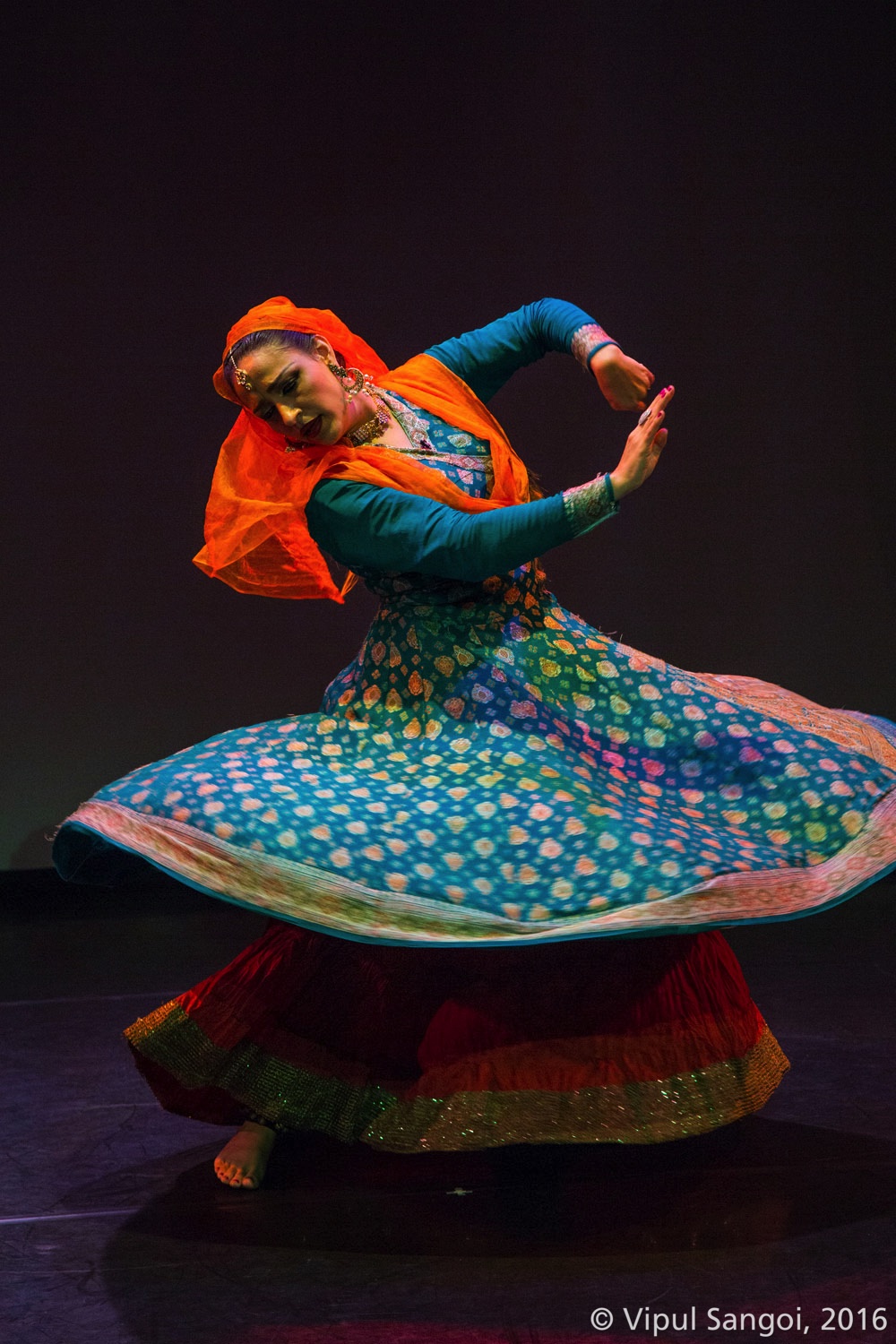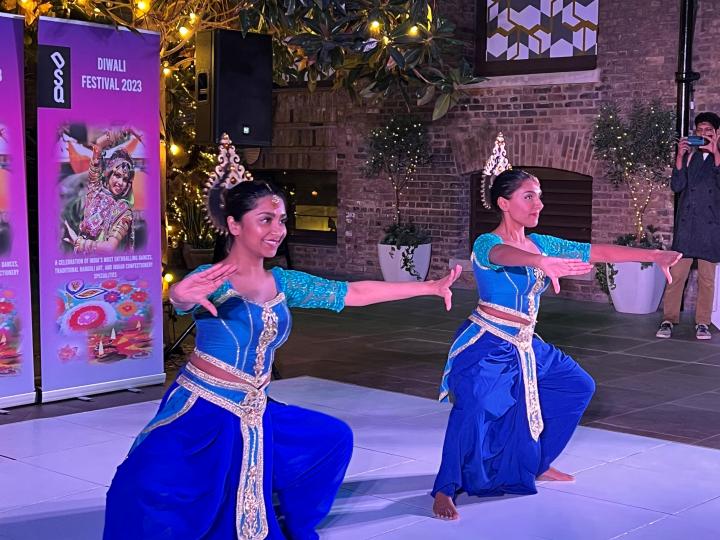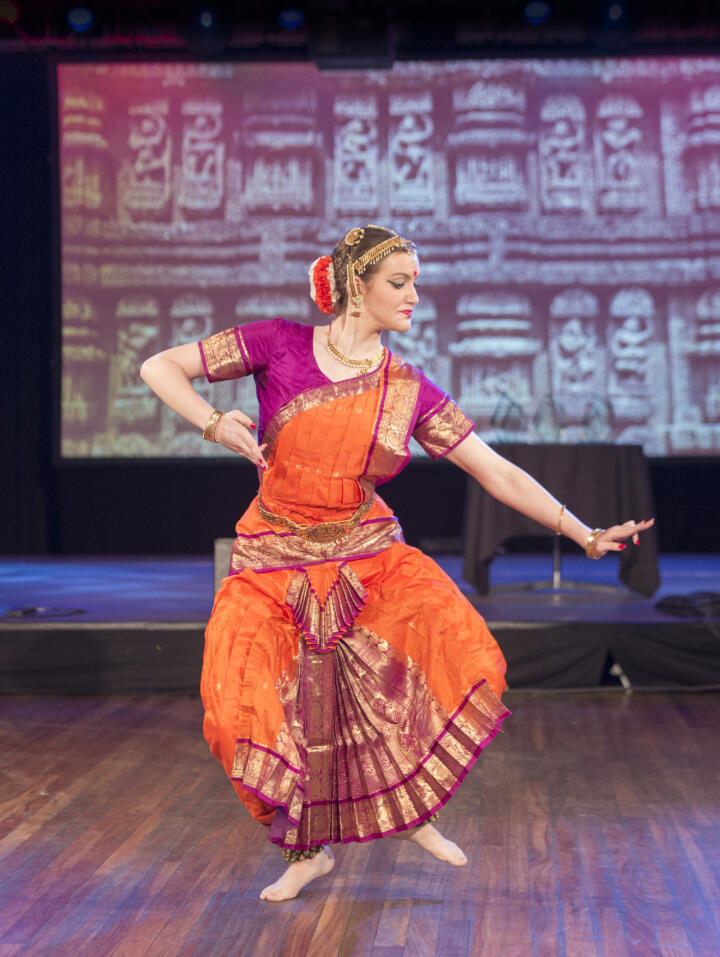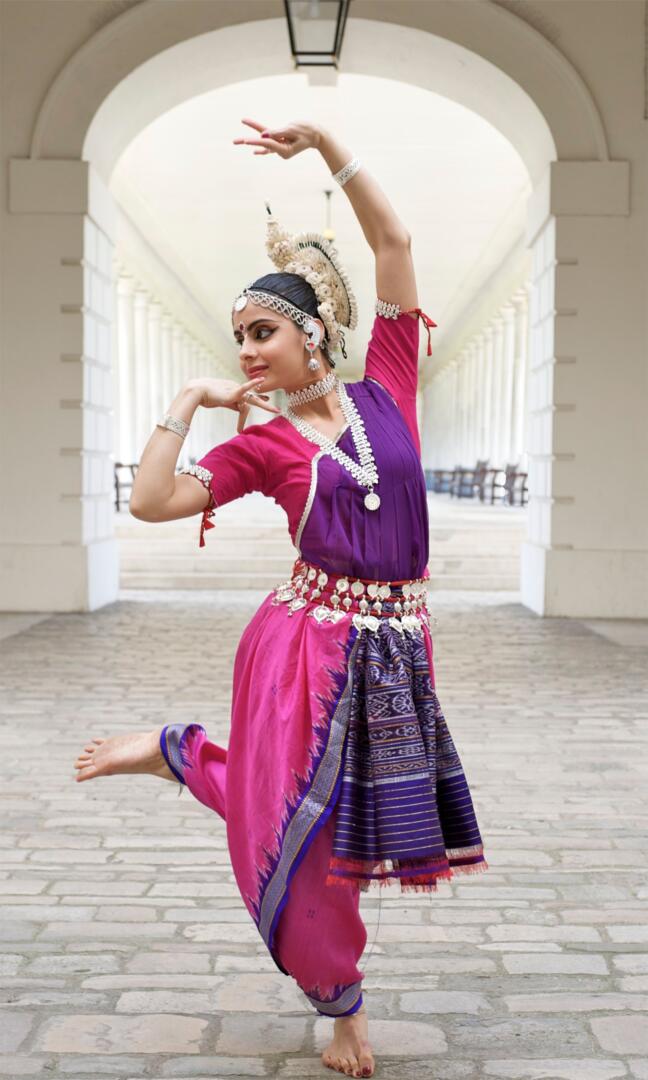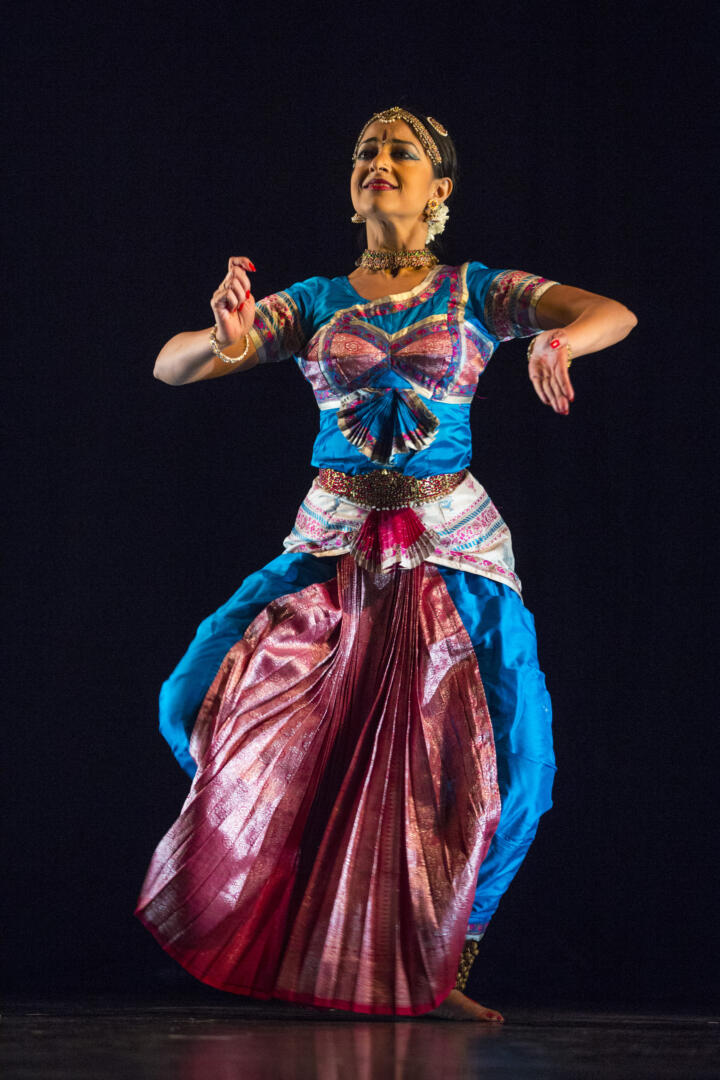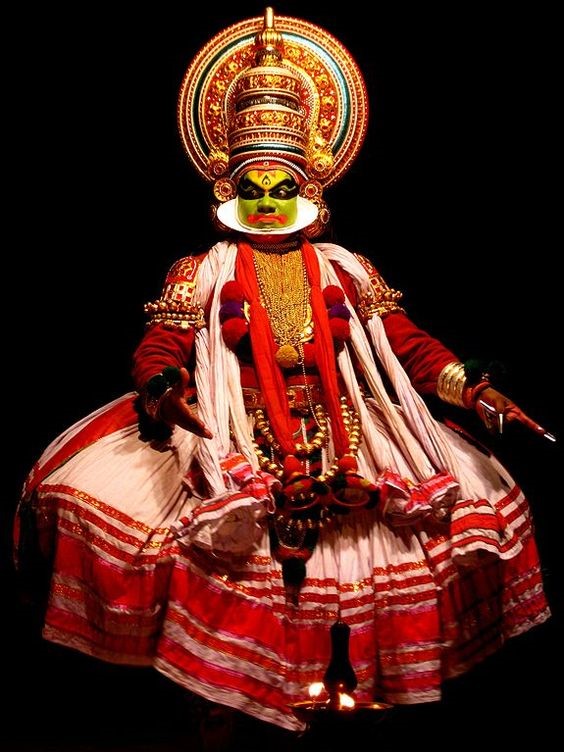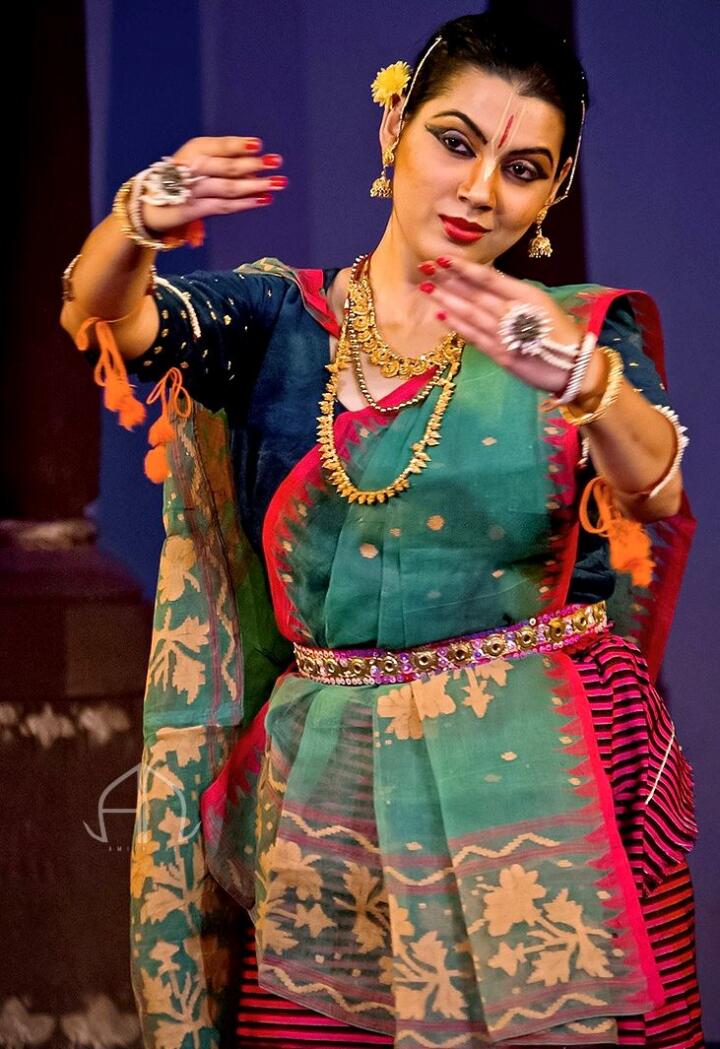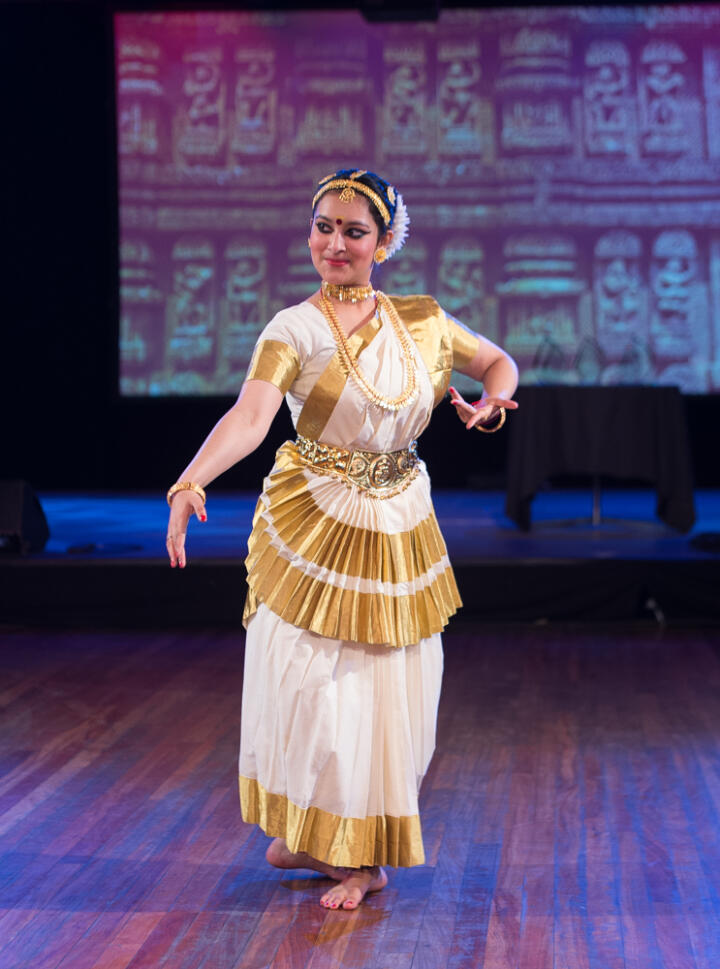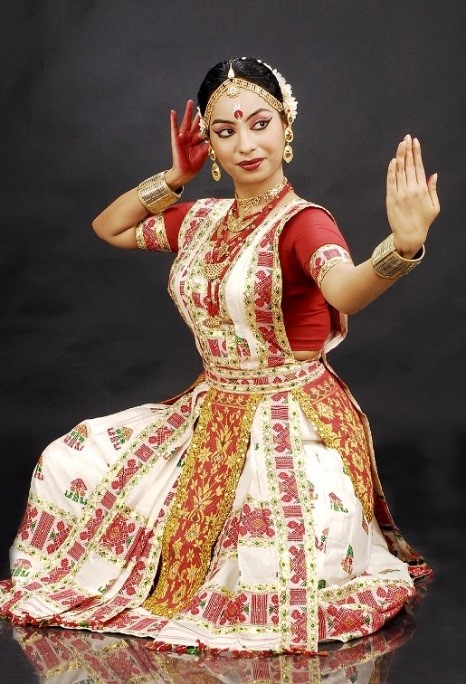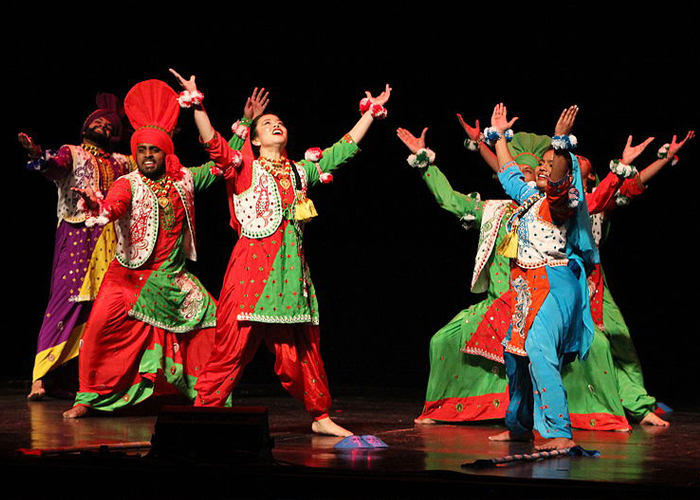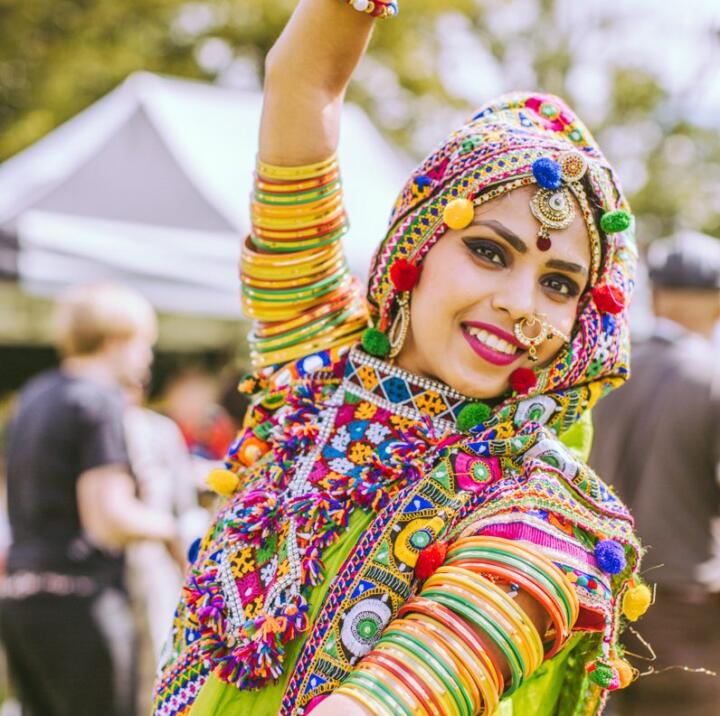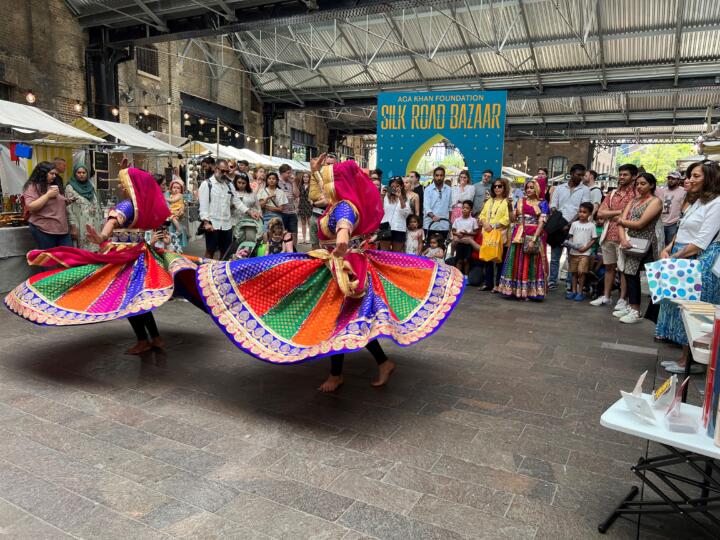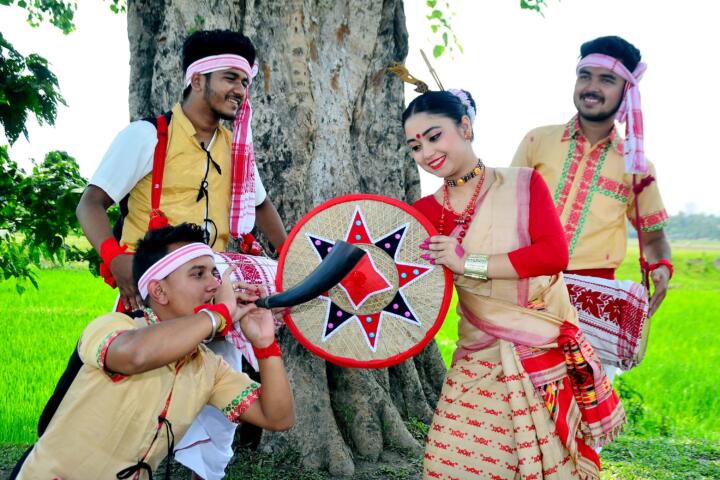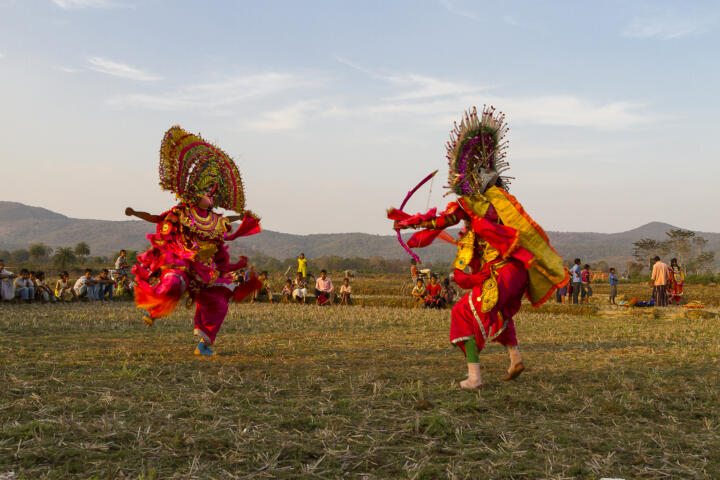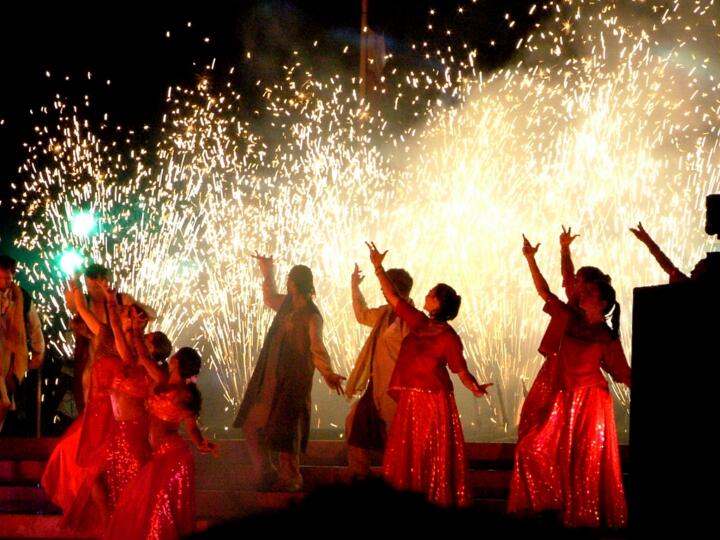Kathak
A guide to Kathak
Kathak is derived from the Sanskrit word katha meaning story and Kathakars meaning the one who tells a story. Kathak traces its origins to the nomadic bards of ancient northern India who used to recite religious and mythological tales using mime and dance accompanied by musician. Kathak started in temples in Northern India and later transited to Mogul court during the Mogul era. This is the only classical dance form that has links with Hindu and Muslim culture.
The pirouettes are the most distinguished feature of Kathak, the technique is built by the use of an intricate use of foot-work, soft gliding movements of the neck, eyebrows and the wrists.
Recitation of the rhythmic syllables is common; the dancer often pauses to recite these to a specified metrical cycle of 16, 10, 14 beats followed by execution through movement. Both the drummer (often a tabla player) and the dancer weave endless combinations on a repetitive melodic line.
The beats are called differently by the names tukra, tora, and parana, all indicative of the nature of rhythmic patterns used and the percussion instrument accompanying the dance. The dance often commences with a sequence called Thaat. This is followed by a conventional formal entry known as the Amad (entry) and the Salami (salutation).
There are three major schools or gharana of Kathak: the Lucknow gharana, known for the expression of moods and emotions, Jaipur gharana famous for its rhythmic virtuosity and Varanasi gharana, which is characterized by the exclusive use of the Natwari or dance bols, which are different from the tabla and the pakhawaj bols. There is also a great use of the floor. These schools are named according to the geographical area in which they were developed and each gharana has a slight difference in interpretation and repertoire.
